Note: This website was automatically translated, so some terms or nuances may not be completely accurate.
Sportsolution × Technology Augmented Sports "Overview"
The SPOLUTION team is a solution unit attempting to create new business opportunities by viewing sports content not just as media content, but also as a solution. Team members will introduce upcoming sports-related business opportunities from their respective perspectives in a relay column format.
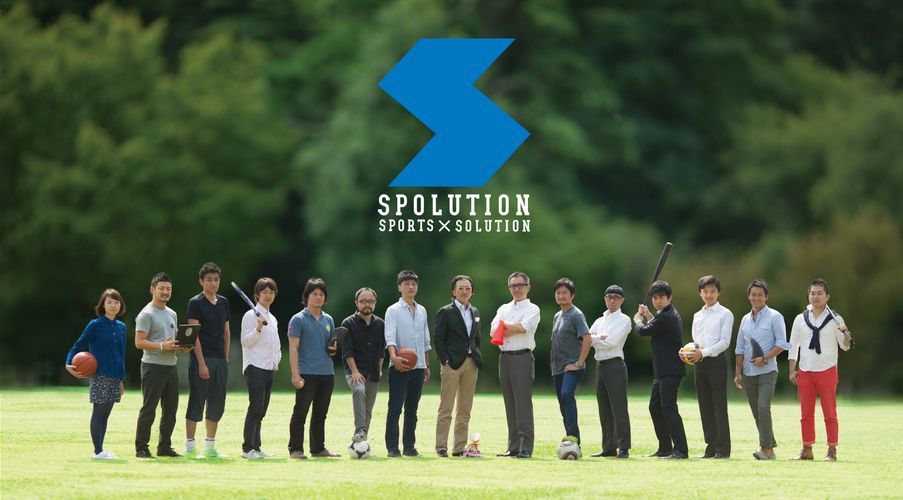
Nice to meet you. I'm Hotta from the SPOLUTION team.
This is the second installment of SPOLUTION × Technology. This time, I'd like to discuss Augmented Sports, a topic I researched during my university days.
"Augmented Sports" is a term you're starting to hear more often these days. However, it still feels like it's mostly just exciting people close to the research field. Frankly, most people probably can't even imagine what combining sports and technology could actually achieve.
Augmented Sports translates to "expanded sports." In other words, it expands sports. So, "What exactly is being expanded in sports?" Let's start explaining from here.
Definition of Augmented Sports
Lately, I've been hearing various definitions of Augmented Sports from prominent figures in different places.
With all due respect, I believe Augmented Sports can be broadly categorized into two main areas.
1. Expansion of Doing Sports
2. Expansion of Sports Viewing ( Sporolution × Technology, Part 1 covers this second category)
*Incidentally, I have specialized in researching the second category: the expansion of spectator sports.
Beyond these two, there's another crucial point: Augmented Sports makes sports enjoyable for everyone.
Now, let's start with a brief explanation of "Expanding Sports Participation."
1. Expansion of Do Sports
This primarily expands the people who play sports and the sports venues themselves.
While playing sports normally is enjoyable, adding technology now makes it possible to transform everyday training or recreational sports into something entirely new.
For example,
"Sports Time Machine"
This Augmented Sports project, exhibited for three months at the YCAM (Yamaguchi Center for Arts and Media) 10th Anniversary Festival in the central shopping district of Yamaguchi City, Yamaguchi Prefecture, made it possible to visually compete against your past self or other animals.
It uses visual information to enhance ordinary races. Children who experienced it reportedly didn't just race; they used their creativity to develop it into other forms of play.

Experiencing this expansion of Do Sports in this way holds the potential to spark imagination, trigger further expansion, and give birth to numerous derivatives.
"Sports Super LIVE Technology"
This is a system we experimentally developed this year at the Nico Nico Super Conference's Nico Nico Gakkai β booth with our in-house independent research team, Team Communication And Technology (Team CAT). We experimented with what happens when real-time effects are applied to regular weightlifting. Mechanically, it's not complicated, but it received high praise from those who actually experienced it. The result showed that people found it fun to see effects applied in real time on the monitor, synchronized with their own movements.
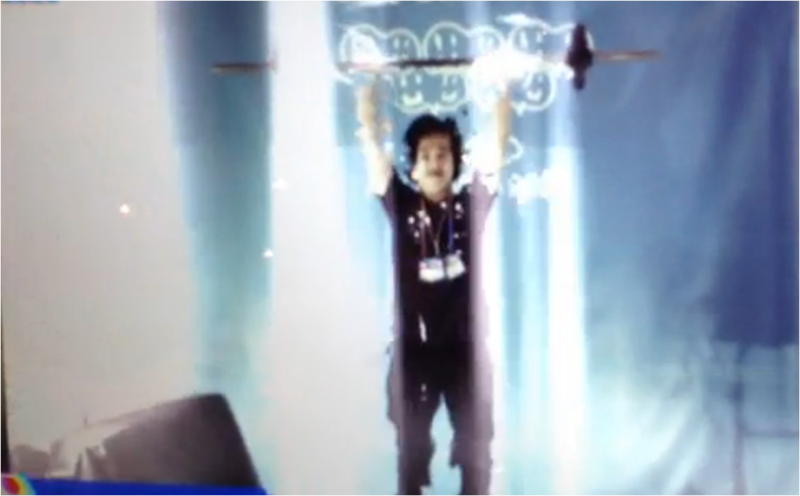
Sports Super LIVE Technology at the Nico Nico Super Conference Nico Nico Gakkai Beta Booth
Beyond entertainment applications, potential uses include adding effects to monotonous gym workouts or boosting motivation by displaying basic information like lift counts.
While the examples introduced here involve visual augmentation, other methods exist. For instance, there's "augmentation of abilities" to enhance human physical capabilities, or conversely, "equalizing sports through limitations" by imposing restrictions to level everyone to the same ability—a form of negative augmentation.
While sports that pit individual skills against each other are important and certainly exciting, the core of Augmented Sports is about making it enjoyable for everyone.
Therefore, one approach is using sports and technology to make it enjoyable for everyone—this is the purpose of "Do Sports Augmentation."
2. Expanding the Spectator Experience
The expansion of spectating can be further divided into two categories.
・Expansion of Visual and Auditory Experiences
・Adding Tactile Information
<Visual and Auditory Expansion>
Visual and auditory expansion enhances the information previously seen and heard during sports viewing, bringing new experiences to the spectator.
For example, my research involved creating ball-perspective footage, which visually expands the spectator experience by showing previously unseen angles.
Seeing is believing. Please watch the actual video.
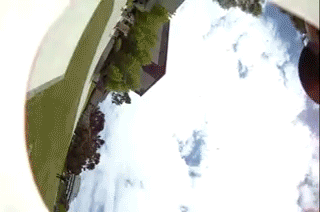
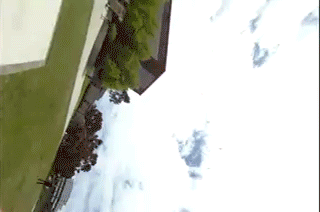
This involves embedding a camera inside an American football and processing the footage captured when the ball is thrown to provide a ball's-eye view.

In ball sports, the ball is the closest point to the players without obstructing them. Therefore, we conducted this research based on the idea that providing footage from the ball would enable closer-to-the-action visuals.
Recently, referee-perspective cameras have been used in actual broadcasts. In tennis, line-call systems assist referees, and in soccer, systems help determine borderline goal-line decisions. These systems are now being visualized during live broadcasts.
Visual information is critically important to humans. We believe that providing previously unseen footage has the potential to create new, profoundly moving experiences.
Next, I will explain the addition of tactile information.
<Adding Tactile Information>
This is a very hot area within the field of my research lab. However, it's also an aspect that isn't yet widely recognized as important. So, how do we overlay sports with tactile feedback...? Think about video games for a moment. At some point, game controllers started incorporating vibration. I'm sure you're all familiar with this.
When you hit the ball in a baseball game, when you hit the post in a soccer game, when your punch connects in a fighting game, or when you get punched... the controller would vibrate.
I experienced this as an elementary or middle school student, but now vibration in game controllers is standard. We enjoy games through sight, sound, and touch as a matter of course.
The same phenomenon is now possible in real sports. I believe the foundation for this has been laid by the miniaturization of sensors and the widespread adoption of smartphones.
So, what kind of information can we reproduce through touch? This is purely my own idea, but
For example,
In boxing, how much impact does that punch land on the person getting hit...?
When you receive a volleyball attack, how much does it hurt...?
I imagine many have pondered such questions (I certainly have).
As for how to achieve this, I actually conducted research on it.
We created a "Smartball"—essentially a smartphone placed inside a ball—and actually threw it. The smartphone inside the ball identifies the impact the player experiences when catching it.
Then, we present that vibration information from the smartphone to the smartphones of spectators watching the scene. It's a very simple mechanism.
This allows spectators to feel the impact of the player catching the ball through vibration via the app.
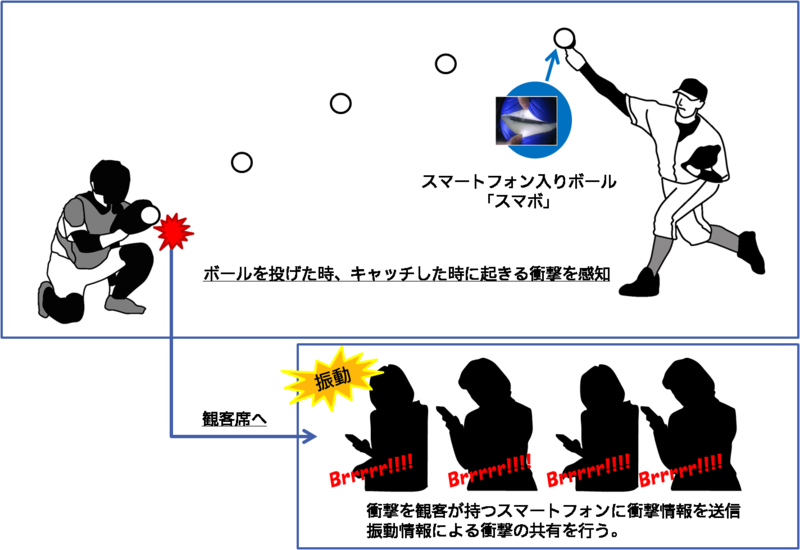
Getting hit or making a save must feel excruciatingly painful (though we'd need to adjust it somewhat...). But feeling that level of intensity is what makes you a true fan. Only by sharing that pain can you truly empathize with the player. That's how I saw it.
This research certainly enables sharing the sensation of receiving an impact. However, haptics isn't that simple. I'd really like to discuss it further, but talking about haptics alone would become a whole other topic, so I'll skip it here.
Compared to visuals and sound, haptic feedback is still far from being mainstream.
However, as mentioned earlier, the foundation is being laid. The expansion of spectating using haptics is probably just around the corner.
When sports enjoyed through touch join sight and sound as common experiences, additional information becomes available. This could allow not only able-bodied individuals but also those with disabilities to supplement missing information through touch, potentially offering new ways to enjoy sports.
Augmented Sports is an emerging field
The technologies introduced here are still very much in development. Nevertheless, the expansion of sports using such technologies is indeed on the horizon. New ways to enjoy sports are coming—images from previously unseen perspectives, the visualization and tactilization of sports data, and enhanced fan experiences. And there is a great deal of research expanding sports beyond what has been introduced here.
While our theme this time was sports and technology, focusing on Augmented Sports using technology, technology is merely a means to an end. Augmented Sports can be achieved through methods other than technology.
The Sporolution team will continue researching the potential of such Augmented Sports!
Thank you for reading to the end, despite my clumsy writing!

★ What is the "Sporolution" Team?
It is an internal unit within Dentsu Inc. that approaches sports content not merely as "media assets," but as "solutions" to address business challenges and project objectives, and plans accordingly.
Our team brings together diverse talents including strategic planners, promotion planners, copywriters, art directors, technologists, consultants, and producers, all with extensive experience in sports planning. Through our Solution Director system, we provide not just "ideas for expression," but also "ideas for solutions" in a one-stop service.
Was this article helpful?
Newsletter registration is here
We select and publish important news every day
For inquiries about this article
Back Numbers
Author

Takahiro Hotta
Dentsu Inc.
Business Co-creation Bureau, Technology Development Department
The Business Co-creation Division develops and supports services using AI chatbots, as well as develops and operates chatbots with distinct personalities. It also engages in marketing support utilizing dialogue data.


